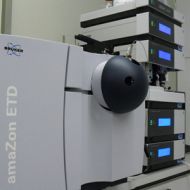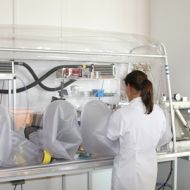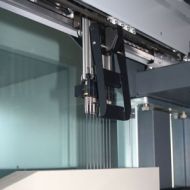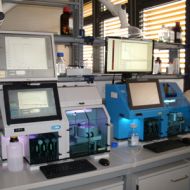Food Chemistry 1
Food Chemistry Division 1
LC-1, headed by Prof. Dr. Markus Fischer, is part of the Institute of Food Chemistry and the HAMBURG SCHOOL OF FOOD SCIENCE at the University of Hamburg.
The research of the Fischer group is characterized by a combination of food related and biochemical/physiological topics.
Research topics
Food Chemistry
- Methods for the detection of allergenic foods (ELISA, MS)
- PCR-based food analytics
- Loop-mediated isothermal amplification assays (LAMP)
- Systematic Evolution of Ligands by EXponential Enrichment (SELEX) for food analytics
Clinical diagnostics of Biomarkers
- Metabolic profiling and metabolic fingerprinting of Diabetes-Modells
- Identification and quantification of lipid key metabolites for Diabetes mellitus and the metabolic syndrom with LC-MS/MS
Biotechnology and Drug Development
High throughput screening (HTS) is a powerful technology for lead compound discovery that has been recently developed in the pharmaceutical industry.
In HTS, chemical libraries of a large number of small organic compounds are screened against biochemical and cell-based assays.
We provide state-of-the-art protein production and large scale substrate synthesis units. Our services include: gene synthesis, generating expression constructs, expression optimization, small-scale or large scale expression/isolation of proteins under aerobic or anaerobic conditions, and enzyme assisted synthesis of substrates that are not easily obtained by organic synthesis.
In our Lab, we have integrated automation equipment for aerobic and anaerobic bioassays, liquid-handling workstations and microplate readers. A major component of the system are liquid handling workstation for pipetting of 96- and 384-well plates. Our state-of-the-art instruments provide non-contact dispensing of 5 to 100 µL to 96- or 384-well plates. We have plate readers integrated in the system for assay signal detection. Several common detection technologies can be used including UV-visible light absorbance, fluorescence, fluorescence polarization, and luminescence.
This integrated automation HTS system allows us to screen for endpoint assays or for kinetic assays at an affordable cost.
Our compound library of more than 150,000 small organic molecules has been carefully selected for drug-like properties. This library of compounds is optimized for structural diversity.
Equipment
Chromatography
- Analyt. and preparative HPLC Systems with DAD, RID, FLD
- FPLC-Systems for protein purification
- GC-Systems (FID, Headspace)
Mass spectrometry
- LC-ESI-Q-ToF (maXis, Bruker)
- LC-ESI-Ion trap (amaZon, Bruker)
- LC-MS/MS (API2000, Applied Biosystems)
- GC-MS (Trace-PolarisQ, ThermoFisher)
- ICP-MS 7700 (Agilent) Spektroskopie
Spectroskopy
- SPR (Sierra Sensors)
- Quartz-Cristal-Microbalance (SierraSensors)
- Plate readers (MolDev SpectraMax Platereader)
- AAS (Perkin Elmer)
- Infrared (Bruker)
DNA-Analytics
- Standard and realtime-PCR-machines (LightCycler II, Roche; IQ5, Biorad)
- denaturing HPLC (Transgenomics)
Proteinanalytics / Immunology
- 1D & 2D Elektrophoresis (GE, Invitrogen)
- ELISA Systems
- Lab-on-a-chip (Biorad)
Drug development
- Bioreactors and Inkubators
- Labs for special purpose (S1 / S1 Risik group 2)
- Robotis for High-Throughput-Screenings (Hamilton, Tecan)
- Dispensing Systems
- Technology for anaerobic working (Glove-Boxes)









